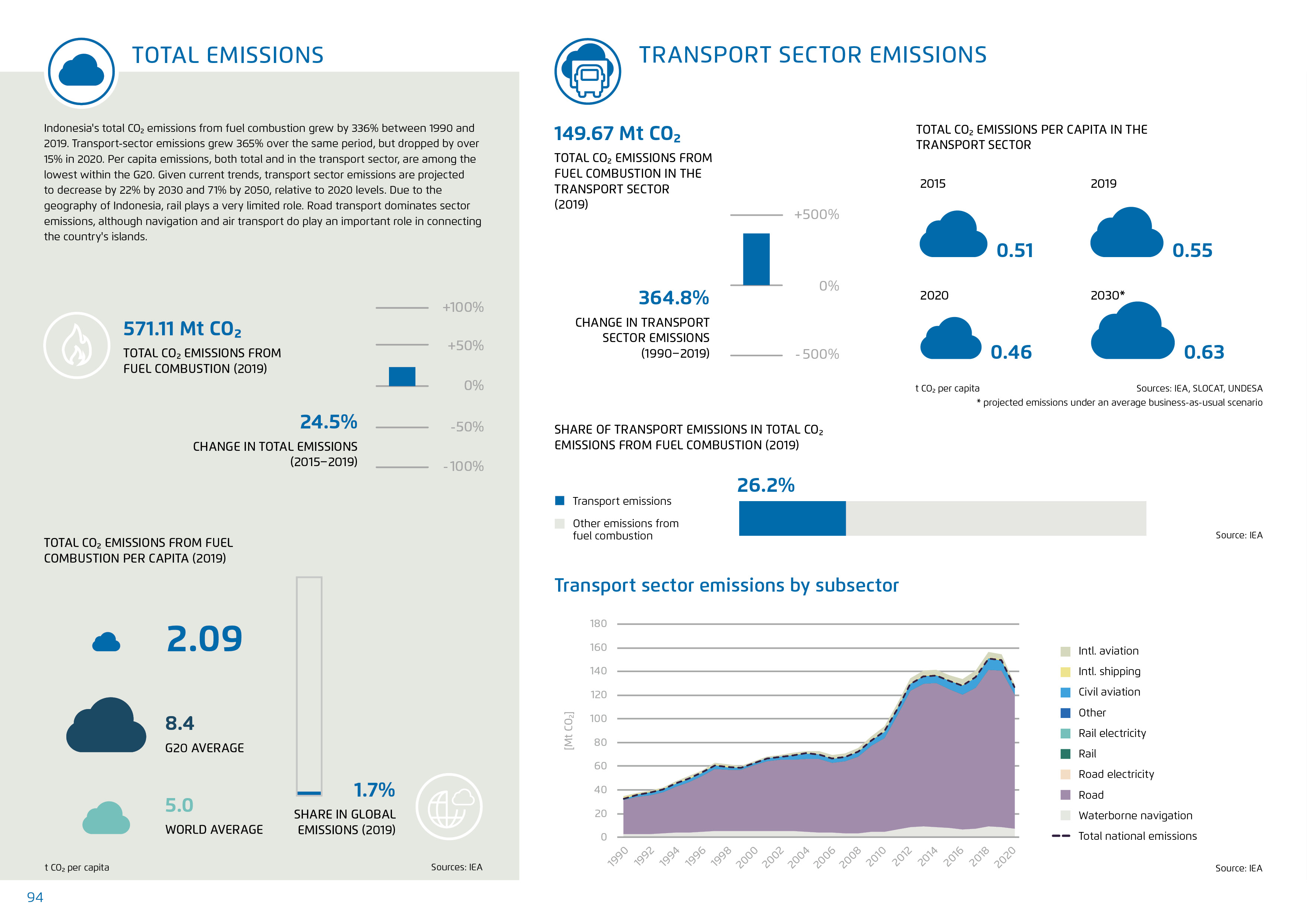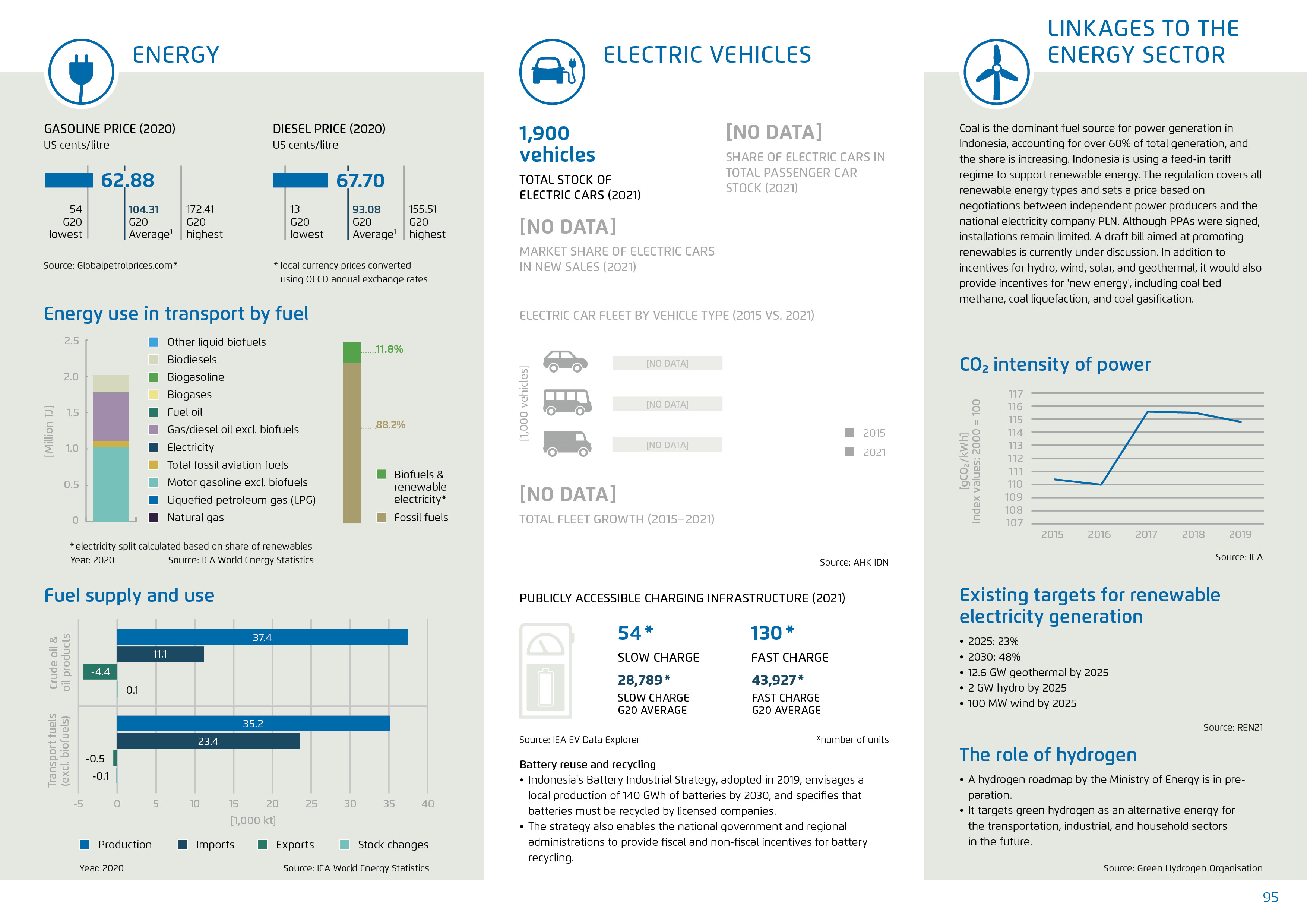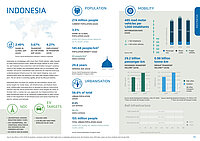This content is also available in: German
Indonesia
Net-zero target: 2060 / Motorisation rate (2020): 485 vehicles per 1,000 inhabitants / Change in transport sector emissions (1990-2019): 364.8 % / Projected total CO2 emissions per capita in the transport sector in 2030: 0.63 t
Indonesia, an archipelago with more than 17.000 islands, relies heavily on inter-island transport links. While the larger islands of Java, Sumatra, and Sulawesi have extensive road-dominated transport systems, many of the smaller, less developed islands rely on in complete, frag-mented, and poorly maintained road networks for internal travel and underdeveloped infrastructure for inter-island shipping. Java andSumatra both have rail networks, but they offer limited freight transport. The air sector is evolving rapidly, driven by discount airlines.
Indonesia does not have CO₂ targets for the transport sector, but some targets for mode share, rail infrastructure, and biofuel share exist. Additionally, Indonesia aims to develop an electric automotive industry and has set EV production and EV stock targets for 2030. In October 2021, a carbon tax was approved, but implementation has been postponed twice so far. Measures implemented to date concentrate on the expansion of rail infrastructure and some incentives for electric vehicles and biofuels.
Key figures on transport and climate
Published in Towards Decarbonizing Transport 2023.








